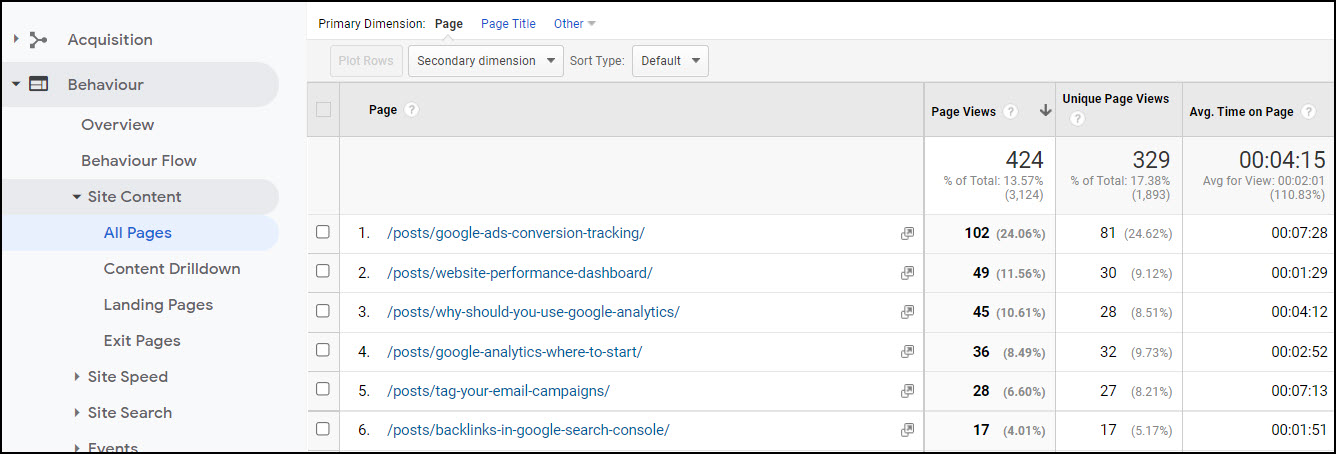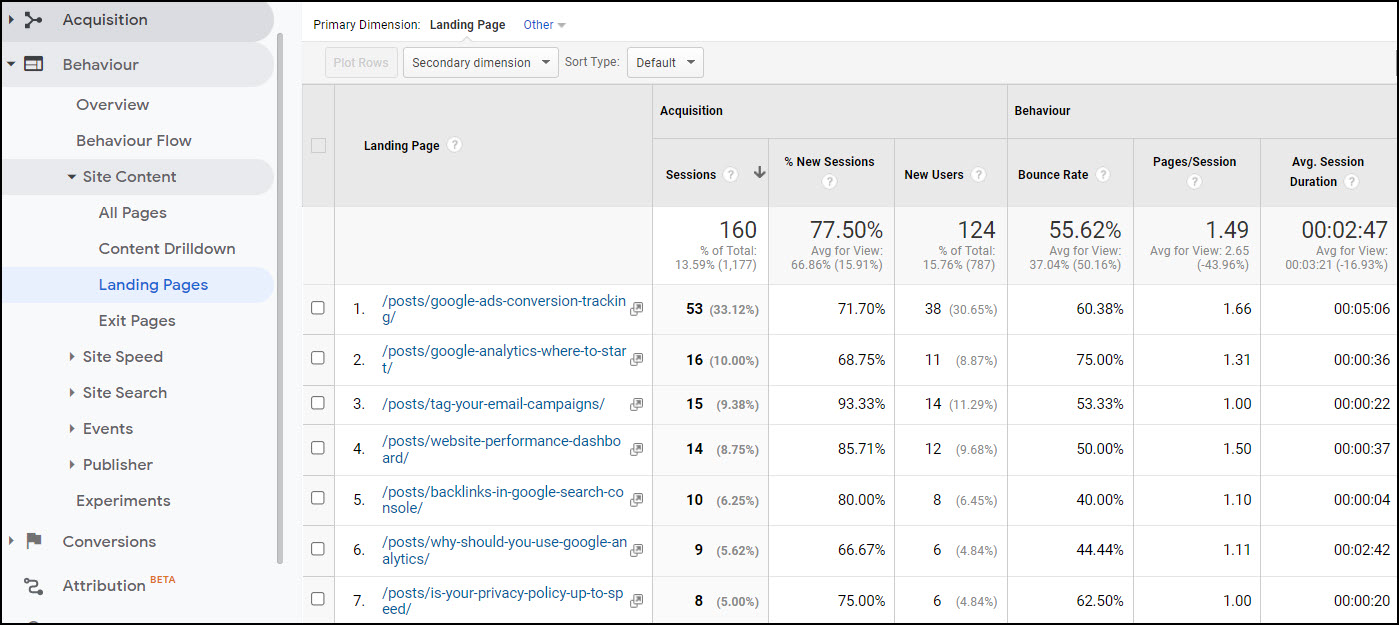
Writing an article for your website is a time-consuming process – although you have the knowledge in your head, you spend time structuring the article, crafting the words and fact-checking to avoid errors.
So, it’s worthwhile knowing which articles are being read over and over. These blog posts are known as ‘evergreen’.
You’ve invested in the article – now you need to get a return.
There are a couple of ways you can get mileage from your effort:
- Replicate the winning traits in other articles
- Use these pages to bring people in your target audience the next step towards being your customer.
How do you find out which articles are read the most?
Your Google Analytics account will tell you which articles are read most.
- In Google Analytics, go to the Behaviour section of reports
- Choose ‘Site Content’ then ‘All Pages’
- Set a long time period, e.g. a few months
- The report shows pages, ordered from most to least pageviews.
If your website content is arranged with all blog posts within a directory, e.g. pages are /blog/pagename or /articles/pagename, then you could filter this ‘All Pages’ report by typing ‘blog’ or articles’ in the filter box.
Otherwise, you can just browse the list to find the most-viewed articles (if the report is many pages, it will be easier to increase the ‘show rows’ so that all rows show on one page).

Landing Page Reports
You will get a slightly different perspective by looking at the Landing Pages report (under ‘Site Content’, then ‘Landing Pages’). Here, you are looking at first pages of every website session. Usually, this means the page was found in search results, or perhaps linked to from social media. You can uncover more about the source by adding a secondary dimension of Default Channel Grouping.
Once you have found the articles that continue to attract views, dig into this some more. What was the topic? What search terms were people using when they found them? Did you use video or images that may have contributed to the popularity? If other people linked to your article, what was the context? Then you can experiment with your next articles, replicating what seems to have worked.

Call to action
Put a ‘call to action’ on the pages that are most viewed. You could offer people a downloadable giveaway on the topic and ask for people’s email address in return for this resource. If you use an email service provider such as Mailchimp, you can easily set up a form and embed it in your page. You can set this up so that the email address is tagged with topic, so that you can follow up with relevant communication.
Segway to your services
In the article, make the connection to what you offer. Tell people how you can help them with the ‘problem’ that brought them to your article. Link to a page that expands on this service.
Replicate your success
Content marketing is a discipline in itself, involving optimising web pages to appeal to both search engines and people. Even if you are not an experienced content marketer, you can still ask yourself what your popular posts have in common.
Are they about particular topics where you are uniquely positioned to provide information that people are looking for? Are they long form or short form? Do they include images? Had you put extra effort into optimising these pages for search engines to attract organic traffic? Did you promote them widely on social media?
Experiment with replicating the traits of those articles. You can either do this in new articles, or go back and revise and refresh your older articles.
It will also be very useful to learn the basics of SEO (search engine optimisation). Then, as you plan content for the future, you can be more deliberate about creating content that has a higher chance of being seen by more people.
Conclusion
You’ve put a lot of effort into providing value on your website, so don’t neglect to use it as a tool to help build your business. Use Google Analytics to identify your evergreen articles, and use these to turn your readers into leads.

